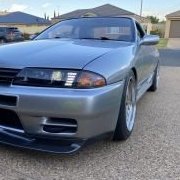Announcements
-
Similar Content
-
Latest Posts
-
I just did the R35 coil pack conversion with Hitachi coils. Now I'm getting TCS, slip and cel lights on. Car runs great and better than before on factory coil packs. Has anyone else ran into this issue?
-
By Dose Pipe Sutututu · Posted
haha I held off on getting a dash for a while because I didn't like the iC7, and I knew Haltech were going to bring out another dash. I just don't know how this will actually fit in the R33 -
IC7 dash is soon to be able to have inputs wired directly in.... oh wait... you dont like nintendo switches do you 😆






Recommended Posts
Create an account or sign in to comment
You need to be a member in order to leave a comment
Create an account
Sign up for a new account in our community. It's easy!
Register a new accountSign in
Already have an account? Sign in here.
Sign In Now